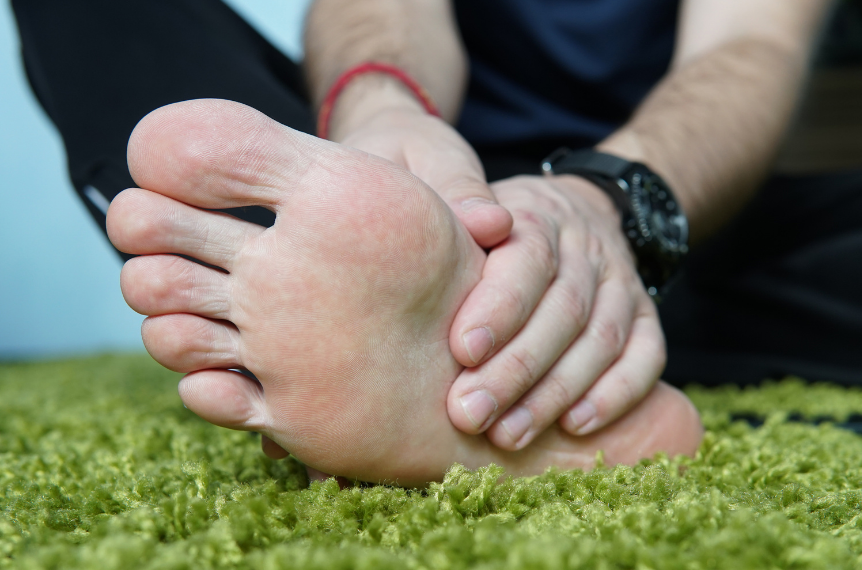A common complaint we get from people in the clinic is foot pain. This may be in the form of burning through the arches of the feet in the morning, heel pain when pressure is applied, or aching throughout the foot. The most common cause for such foot pain is a condition called Plantar fasciitis.
According to Health Direct Plantarfasciitis is an inflammation of the plantar fascia, a piece of strong, thick tissue that runs along the bottom of the foot. It connects the heel bone to the toes, creating the arch of the foot.
Symptoms often include:

- Pain under the heel or in the arch of the foot – however some people will get pain on the top of the foot, towards the ball of the foot or towards the outside of the foot
- Aching or burning pain
- Worst pain is often in the morning with the first few steps, or after prolonged sitting
Common well known causes include:
- Sports that include running, jumping, dance, aerobics, etc.
- Tight calf muscles
- Being ‘flat footed’ or having ‘high arches’ combined with often wearing shoes with poor support or stiff soles
- Being overweight
- Being middle aged and above
- Pregnancy
A less commonly known cause is hamstring tightness. A study in 2011 by Labovitz et al (1) found that there was a strong link between hamstring tightness and plantar fasciitis. The study included 105 patients, 79 of whom had been diagnosed with plantar fasciitis. It found that patients with hamstring tightness were about 8.7 times as likely to experience plantar fasciitis.
The reason for this is believed to be that hamstring tightness induces prolonged forefoot loading due to increased knee flexion (bend) during gait. Forefoot loading increases the stretch load through the plantarfascia. More time spent under load can cause inflammation to occur. This study demonstrated that hamstring tightness plays a significant role in the presence of plantarfasciitis and should be addressed in treatment for patients with plantarfasciitis.

So if you think you are a ‘high-risk’ candidate for plantar fasciitis then perhaps you should consider stretching those hamstrings out! Get up out of your chair at work and try to reach your toes. If you can’t quite reach them because you feel too tight behind your knees, you probably need to get stretching!
Don’t forget to consult with your Physiotherapist before starting new exercises. We are here to help.
- Labovitz J, Yu J & Kim C 2011, The Role of Hamstring Tightness in Plantar Fasciitis, Foot & Ankle Specialist 4(3):141-4.


